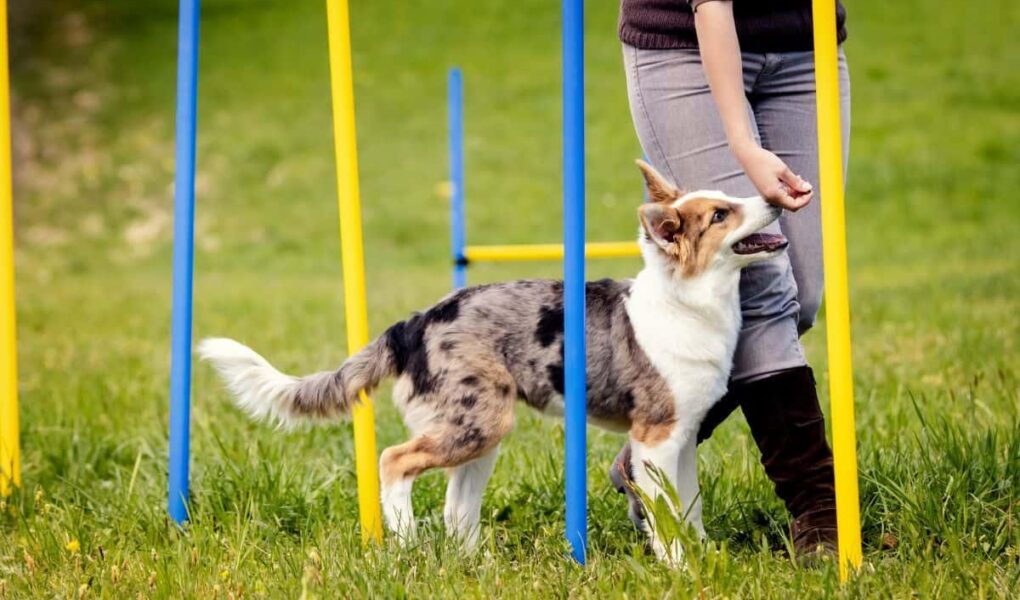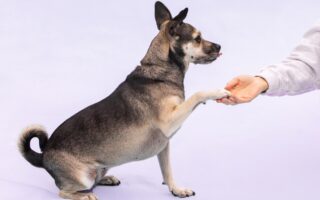Unlocking the Canine Mind: Essential Lessons to Teach Your Dog
Dogs are often celebrated as our loyal companions, yet the bond between human and canine goes beyond just friendship—it’s a shared language of understanding. As pet owners, it’s our responsibility to cultivate this connection through meaningful training. Just like a child learns to navigate the world with guidance, our furry friends thrive when taught essential skills that enhance their lives and strengthen our relationship. From basic commands that ensure safety to fun tricks that showcase their intelligence, the lessons we impart can pave the way for a harmonious coexistence. In this article, we’ll explore some fundamental things to teach your dog, helping you unlock not just their potential, but also the joy of shared experiences along the way.
Table of Contents
- Essential Commands for a Well-Behaved Canine Companion
- Building Trust Through Positive Reinforcement Techniques
- Engaging Games to Stimulate Your Dogs Mind and Body
- Nurturing Social Skills for Confident Dog Interactions
- Q&A
- Closing Remarks
Essential Commands for a Well-Behaved Canine Companion
Teaching your dog essential commands can be a transformative experience for both you and your furry friend. Not only do these commands promote good behavior, but they also strengthen the bond between you. Start with the basics, such as “Sit”, which helps establish your dog’s focus and encourages patience. Another vital command is “Stay”, which is essential for safety, especially in distracting environments. Consistency is key, so make sure to reward your dog with treats and praise to reinforce these commands.
As your dog masters the fundamental commands, consider introducing more advanced ones that promote good manners and can enhance their social interactions. Commands like “Leave it” help prevent your dog from picking up potentially harmful items, while “Come” is crucial for recall, ensuring that your dog returns to you when called. Below is a simple table summarizing these commands and their benefits:
| Command | Benefit |
|---|---|
| Sit | Teaches patience and focus. |
| Stay | Ensures safety in various situations. |
| Leave it | Prevents ingestion of harmful objects. |
| Come | Enhances recall and responsiveness. |
Building Trust Through Positive Reinforcement Techniques
Establishing a bond with your dog is essential and utilizing positive reinforcement techniques can be an effective means to build that trust. Instead of relying on punitive methods, focus on rewarding desirable behavior with treats, praise, or playtime. This approach not only encourages your dog to repeat good behavior but also fosters a loving and respectful relationship. Here are some effective techniques to implement:
- Clicker Training: Use a clicker to mark the exact moment your dog performs the desired behavior, followed by a reward.
- Treats: Small, tasty treats work wonders in motivating your dog during training sessions.
- Praise: Verbal affirmations and enthusiastic praise can greatly enhance your dog’s confidence.
- Consistency: Always use the same commands and rewards to help your dog learn more effectively.
By observing the unique preferences of your dog, you can tailor your training methods to enhance engagement and receptivity. Keeping training sessions upbeat and short will also prevent your dog from losing interest and ensures they remain enthusiastic learners. Below is a simple guide to common techniques:
| Technique | Description |
|---|---|
| Target Training | Teach your dog to touch a target with their nose or paw, promoting engagement. |
| Impulse Control | Train your dog to wait for your cue before receiving a treat, reinforcing patience. |
| Socialization | Expose your dog to different environments and people, rewarding calm behavior. |
Engaging Games to Stimulate Your Dogs Mind and Body
Keeping your dog mentally and physically engaged is essential for their overall well-being. Here are some fun and stimulating games that can help unleash their inner genius while providing a great workout:
- Hide and Seek: This classic game not only keeps your dog on their toes but also sharpens their problem-solving skills. Hide somewhere in your home and call your dog’s name, rewarding them when they find you.
- Interactive Puzzle Toys: These toys challenge your dog to figure out how to access treats hidden inside. They promote cognitive development and can keep them entertained for hours.
- Obstacle Course: Set up a mini agility course in your backyard using everyday items like chairs, cones, and tunnels. This physical game enhances agility and obedience as your dog navigates through the course.
- Fetch with a Twist: Instead of the usual game of fetch, mix it up by throwing two different toys and teaching your dog to bring back the specific one you name.
For a structured approach, consider training sessions that incorporate both physical activity and mental stimulation. Utilize short, engaging sessions combined with rewards:
| Activity | Duration | Benefit |
|---|---|---|
| Trick Training | 10-15 minutes | Enhances obedience and cognitive function |
| Scent Work | 15-20 minutes | Stimulates their sense of smell and keeps them focused |
| Playdates | 30-60 minutes | Improves social skills and burns energy |
Nurturing Social Skills for Confident Dog Interactions
Developing strong social skills in your dog is essential for fostering positive interactions with other dogs and people. Start by teaching your dog to respond to basic commands in social situations. This foundation can include commands like “sit,” ”stay,” and “come,” which will help maintain control in any environment. Reinforcing these commands with positive reinforcement—like treats or praise—can increase your dog’s confidence and willingness to engage with others. Additionally, exposing your dog to a variety of environments and situations, such as busy parks or dog-friendly events, will help them learn how to behave appropriately around strangers and peers.
Another key aspect to nurture is friendly body language. Dogs communicate not only through barks but also through their posture and movements. To teach your dog to display friendly body language, focus on the following actions:
- Loose Leash Walking: Encourage your dog to walk calmly beside you.
- Tail Wagging: Reward your dog for wagging their tail in a relaxed manner when greeting others.
- Play Bow: Teach your dog to initiate play by incorporating the play bow stance.
It’s also valuable to engage in controlled playdates with well-socialized dogs. Use structured playtime to observe and correct any undesirable behavior, ensuring constructive interactions. To outline some positive traits you can encourage during these interactions, consider the following:
| Positive Trait | Description |
|---|---|
| Playfulness | Encourage your dog to engage in light, playful behavior without aggression. |
| Curiosity | Allow your dog to safely explore new environments and meet new friends. |
| Respectful Distance | Teach your dog to observe other dogs before approaching. |
Q&A
Q&A: The Ultimate Guide to Teaching Your Dog New Tricks
Q1: What are the essential commands every dog should learn?
A1: Every dog should master the foundational commands of “Sit,” “Stay,” “Come,” and “Down.” These commands not only promote good behavior but also ensure safety in various situations. Think of them as the building blocks of your dog’s education!
Q2: How can I teach my dog to “Sit”?
A2: Begin with a treat in hand and let your dog see it. Move your hand upwards, causing their head to tilt back and their bottom to lower. Once their rear is on the ground, say “Sit,” and reward them with the treat. Consistency and positive reinforcement are key—practice daily!
Q3: Is it important to teach my dog tricks, or can I skip them?
A3: While basic commands are crucial, teaching tricks can enhance your bond and stimulate your dog’s mind. Tricks, like “Shake” or “Roll Over,” can be fun and a great way for your dog to exercise their brain while showcasing their skills to friends and family!
Q4: What about behavior modifications? How do I correct bad habits?
A4: Addressing bad habits like jumping or barking excessively requires patience. Redirect your dog’s energy by teaching an alternative behavior—like sitting politely when greeting guests. Using positive reinforcement when they do it right can gradually eliminate unwanted behavior.
Q5: How can I ensure my dog is motivated to learn?
A5: Every dog has its own motivators, whether treats, toys, or praise! Discover what excites your dog most and incorporate it during training sessions. Keep it fun and engaging to maintain their interest and enthusiasm.
Q6: Can I teach my dog more advanced commands, and if so, how?
A6: Absolutely! Commands like “Fetch,” “Leave it,” and “Roll Over” can be introduced once your dog has mastered the basics. Break the trick down into small, manageable steps, and use plenty of praise to encourage your furry friend along the way.
Q7: What age is best to start training?
A7: The ideal time to start training is as early as eight weeks old. Puppies are particularly receptive during this socialization window. However, it’s never too late to teach an old dog new tricks. Adapting your training approach to their age and personality can yield great results at any stage.
Q8: How do I handle a stubborn dog that refuses to learn?
A8: Stubbornness can often stem from boredom or frustration. Keep training sessions short and fun, mixing in playtime. Additionally, consider varying the rewards to find what truly motivates your dog. Patience is key—every dog learns at their own pace!
Q9: Are there any resources you recommend for dog training?
A9: There are numerous resources available, from online courses and training apps to local classes. Books authored by renowned trainers can also provide valuable insights. Additionally, sites like YouTube offer countless video tutorials that can enhance your training experience.
Q10: Why is it important to bond with my dog during training?
A10: Building a strong bond with your dog through training fosters trust and cooperation. A well-connected dog is more likely to engage and respond positively to your commands. Plus, the joy of learning together can strengthen your friendship and lead to a more harmonious life.
Conclusion: Training your dog is a rewarding adventure filled with opportunities for bonding and fun. With love, patience, and consistent practice, you’ll find that teaching your dog not only enhances their skills but deepens your connection, transforming your relationship for years to come. Happy training!
Closing Remarks
As we conclude our journey into the enriching world of dog training, it’s clear that the bond between you and your furry companion only deepens through shared learning experiences. Whether you’ve opted for basic commands or more advanced tricks, each lesson is a stepping stone toward a stronger relationship built on trust and understanding. Remember, patience and consistency are your best friends in this adventure. So grab that leash, gather your treats, and embark on the wonderful quest to teach your dog not just obedience, but also the joy of learning. After all, each wag of the tail and playful bark is a reminder that you’re not just training a pet; you’re nurturing a lifelong friendship. Happy training!



